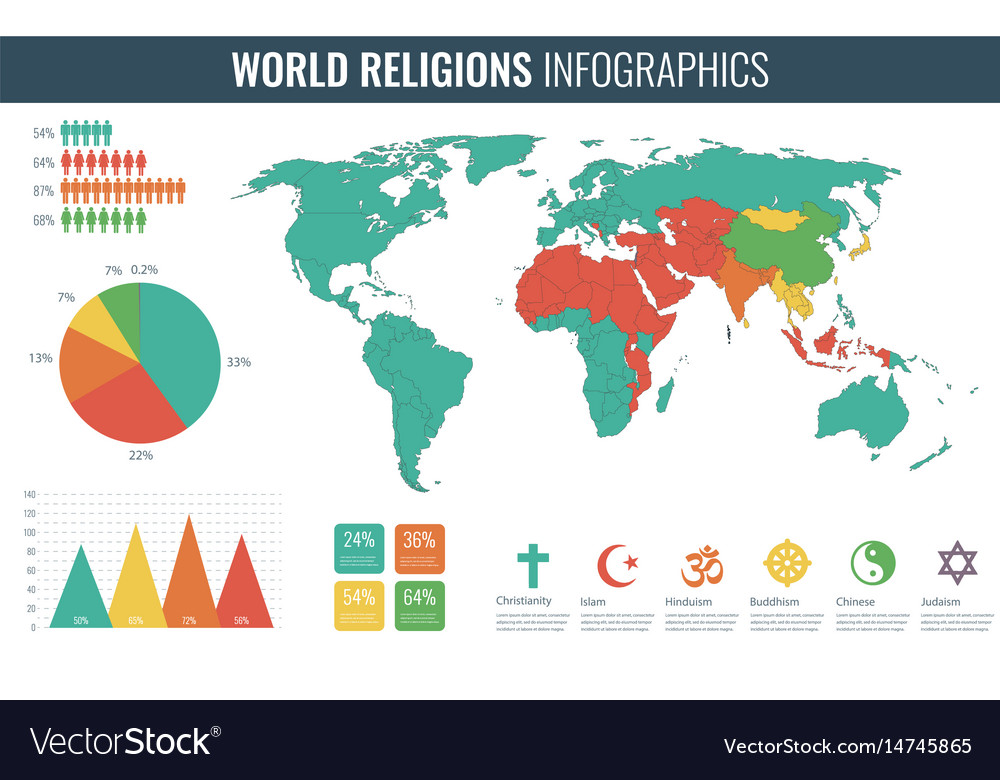As we traverse the intricate tapestry of human belief, the landscape of global faiths is both diverse and dynamic. The year 2025 heralds significant changes in the demographic and cultural compositions of the world’s religions. Understanding these shifts is paramount, especially through the lens of Christianity, one of the largest religions that resonantly echoes through the corridors of history and modernity.
Globally, religions serve as rudders guiding individual souls through life’s vast ocean. Each tradition offers a unique perspective, a sacred lens through which to interpret the mysteries of existence. In 2025, Christianity holds its position as the most populous religion, followed closely by Islam, Hinduism, and Buddhism, among others. As the world evolves, the numerical stature of these faiths often transforms, reflecting both migration patterns and cultural assimilations.
Christianity, with its roots firmly planted in the fertile soil of Judea over two millennia ago, has burgeoned into a vibrant and multifaceted faith encompassing over two billion adherents. Encompassing myriad denominations—from Roman Catholicism to Orthodoxy, and various Protestant traditions—Christianity remains a powerful force in shaping moral frameworks, societal structures, and cultural identities.
What drives the continuing growth of Christianity in the modern epoch? One contributing factor is the flourishing of Christianity in regions such as sub-Saharan Africa and parts of Asia. As communities spark flames of faith and congregational enthusiasm, the Church acts as a focal point, weaving a rich narrative of hope amidst adversity. This resurgence mirrors the rapid fecundity of nature following a cleansing rain, wherein the seeds of faith find a nurturing environment to flourish.
As we examine statistics surrounding religious adherents, projections indicate that by 2025, Islam will overtake Christianity in growth rate, primarily due to higher birth rates among Muslim populations and continued conversions. In many ways, this burgeoning demographic within the Islamic tradition challenges Christians to reflect on their own identity and mission in a world that is increasingly pluralistic and interwoven.
The allegorical story of the mustard seed, as told in the Scriptures, captures the essence of Christianity’s growth. The seed, though diminutive, grows into the largest of all garden plants, illustrating that what begins as faith, often seen as small and insignificant, can blossom into a profound movement of love, community, and transformative change. This metaphor resounds with the contemporary Christian experience: the potential for exponential growth lies not solely in numbers but in deeper discipleship and active engagement in communities.
Moreover, outside geographical contexts, one’s perception of the relevancy of religion in contemporary life cannot be understated. In the age of digital advancement and global connectivity, social media and online platforms serve as contemporary cathedrals where faith can be shared, discussed, and expanded upon. Virtual congregations and digital missions have emerged, redefining how individuals encounter and practice their faith. This transition from traditional places of worship to a more fluid, digital space echoes the wandering path of ancient Israelites, navigating their journey while in transit—but with renewed vigor.
Despite the vibrant growth of Christianity, challenges persist. The interplay of secularism and religious belief often presents formidable obstacles to faith. This emerging ethos can be perceived as a countercurrent to the fervor of religious conviction. In some urban landscapes, the allure of materialism and individualism fosters an environment where faith is sometimes seen as antiquated or irrelevant. However, within the crucible of modernity, there lies a profound opportunity for revival. Christians are called to express their faith in ways that resonate with contemporary society—driving social justice initiatives, advocating for the marginalized, and embodying Christ’s message of love and reconciliation.
Conversely, the growth of major religions invites Christians to reflect on the significance of interfaith dialogue. Each faith, representing a sliver of humanity’s quest for meaning, offers insights that can enrich our understanding of the Divine. While Christianity remains steadfast in its theological tenets, engaging with other faith traditions provides a fuller understanding of our shared humanity. The fruitful exchange of ideas can mitigate misunderstandings and foster a sense of global kinship—a shared yearning for truth, purpose, and belonging.
At the precipice of 2025, religions are not mere garden plots growing in isolation, but interconnected ecosystems thriving in mutual respect and dialogue. Christianity, with its vast history and resounding legacy, faces a moment of reflection and adaptation. By recognizing and responding to global religious dynamics, believers are invited to engage in thoughtful strategies that promote Christian teachings amid a landscape shaped by diverse faith traditions.
In conclusion, the world’s religious milieu in 2025 is marked by significant growth and energizing change. The call for Christians is not limited to the preservation of faith but embraces the vibrant vision of participating in the world’s narrative. Just as the relentless waves sculpt shorelines, so too do faiths evolve, reshaping our perceptions while offering timeless truths. The journey into the future beckons the faithful to embrace innovation, nurture relationships, and fulfill the Great Commission amid a world longing for spiritual nourishment.



